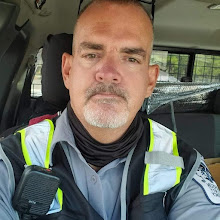Hassayampa River Preserve
One More Time
McDonald's is the leading global foodservice retailer with more than 31,000 local restaurants serving more than 58 million people in 118 countries each day. More than 75% of McDonald's restaurants worldwide are owned and operated by independent local men and women.
Protects Earth's most important natural places
for you and future generations
through great science and smart partnerships.
They protected more than 119 million acres of land and
5,000 miles of rivers worldwide and
they operate more than 100 marine conservation projects globally.
They have more than 1 million member.
They work in all 50 states and more than 30 countries.
In Arizona, the Conservancy has helped protect more than 1.5 million acres. Included in those acres are the Conservancy's 12 preserves in Arizona. Six of the preserves are open to the public.
The Hassayampa River Preserve has been a nature lover's and birder’s paradise since it was purchased by The Nature Conservancy in 1986. Once part of the Frederick Brill Ranch, the Preserve is now listed on Arizona’s State Register of Historic Places.
.JPG)
.JPG)
The preserve features desert cottonwood/willow riparian forest, desert fan palms, plus Sonoran Desert species such as saguaro, barrel and cholla cactus, mesquite, paloverde, and spring wildflowers. The Preserve provides habitat for more than 280 resident and migratory bird species.
The Colorful History of the Hassayampa Preserve
On the preserve grounds you will encounter a former ranch house and stagecoach stop and a family grave site with a tragic story to tell. The Hassayampa River Preserve and headquarters was once a part of the Frederick Brill Ranch, now listed on Arizona’s State Register of Historic Places. The adobe core of the Visitor Center was built in the 1960’s. Brill raised cattle and operated a stagecoach way station, raised fruit from extensive orchards, and raised carp in the spring-fed pond. In 1913, the ranch became one of Arizona’s first guest ranches. Travelers stop into the Visitor’s Center with tales to tell. One talked of playing poker in the center’s kitchen with ranch hands from the guest ranch and being allowed to ride palomino horses along the clear, cool river. Another told stories of a trailer park that used be on the property and of people water-skiing on the pond in the 1960’s
In the mid-1800’s the area around Wickenburg was considered untamed with raids by bandits and Apaches quite common. One unsolved murder remains attached to the preserve property. In 1886, the Martin family, after threats and unfair business practices of a competitor in the mercantile business, packed up their belongings and left their home to resettle in the Phoenix area. The family was ambushed just south of Wickenburg. The entire family was murdered and their bodies burned. Ranch hands from the Brill Ranch went to investigate. The owner of the ranch asked that the family’s remains be brought to the property for a proper burial. The burial site of the Martin family remains on the preserve property today. Look for it on the right as you drive down the entrance road.
Along the river live such species as Gilbert's skink, zone-tailed hawk, Mississippi kite, yellow-billed cuckoo, willow flycatcher, mule deer, javelina, and ringtail; over 230 species of birds have been recorded at the preserve
Location 49614 N. U.S. Hwy. 60
Wickenburg, AZ 85390
Call (928) 684-2772 or e-mail bmccollum@tnc.org
Palm Lake where waterfowl, otherwise uncommon in the desert, are a major attraction
The well-preserved cottonwood-willow gallery (Frémont cottonwood and Goodding willow) is one of the most threatened forest types in North America
Palm Lake
At Palm Lake, a four-acre pond-and-marsh habitat, live five species of rare desert fish: bonytail chub, Colorado River squawfish, razorback sucker, Gila topminnow, and desert pupfish
Desert Fan Palm-Washingtonia filifera
The Fan Palm is the fastest grower of all.
They can grow 1-2feet per year.
But then they can get up to 100 feet,
Tree Fungus
.JPG)
The Preserve depends upon entrance fees to carry out its conservation activities. Enetry fee is $5 per person; Conservancy members $3; children under 12 are free. Visitors can purchase an annual pass for $25 that allows access to the Hassayampa River Preserve as well as Ramsey Canyon and Patagonia-Sonoita Creek preserves in southeastern Arizona.
.JPG)
Wiped Out


.JPG)
.JPG)
.JPG)
.JPG)
.JPG)
.JPG)
.JPG)
.JPG)
.JPG)
.JPG)
.JPG)
.JPG)
.JPG)
.JPG)
.JPG)
.JPG)
.JPG)
.JPG)
.JPG)
.JPG)
.JPG)
.JPG)
.JPG)
.JPG)
.JPG)
.JPG)
.JPG)

.JPG)
.JPG)
.JPG)
.JPG)
.JPG)
.JPG)
.JPG)
.JPG)
.JPG)
.JPG)
.JPG)
.JPG)
.JPG)
.JPG)
.JPG)
.JPG)
.JPG)
.JPG)
.JPG)
.JPG)
.JPG)
.JPG)
.JPG)
.JPG)
.JPG)
.JPG)
.JPG)
.JPG)
.JPG)
.JPG)
.JPG)
.JPG)
.JPG)
.JPG)
.JPG)
.JPG)
.JPG)
.JPG)
.JPG)
.JPG)
.JPG)
.JPG)
.JPG)
.JPG)
.JPG)
.JPG)
.JPG)
.JPG)
.JPG)
.JPG)
.JPG)
















